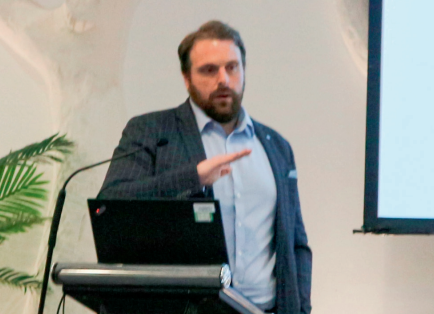The Hospital Pharmacists Association of Ireland (HPAI) recently held its Annual Educational Conference in Dublin, which featured a line-up of national and international speakers with expertise in different disciplines. Running from 21 to 23 April, the conference featured pharmaceutical exhibitions, workshop sessions, a range of informative and varied oral and poster presentations, and the Association’s AGM. The Sunday sessions were moderated by Mr Declan O’Sullivan, HPAI executive member.

The conference heard a presentation from Mr Kieron Power, Lead Pharmacist for Thrombosis and Anticoagulation at the Singleton Hospital, NHS Wales. He spoke on the topic ‘The Future of Pharmacy-Led Cancer-Associated (CAT) Clinics — A Real Life Case Study’. Mr Power discussed treatment opportunities and challenges at different disease stages and told the conference: “We now know that some cancers have a higher risk of VT than others,” he said. “Some of the highest risk tends to be seen in pancreatic, lung, GI, and brain cancers. But in terms of absolute numbers, the most common types of cancers that we see in the clinic are actually prostate and breast.” There are many challenges in treating patients at different stages of their cancer progression, he said, and he stressed that “not all cancer patients should be thought of in the same way”.
CAT is a common complication of cancer, he explained, and is in fact “the second-most common cause of death in cancer patients, after the tumour itself ”. It also significantly affects survival rates, with studies showing that there is a 12 per cent one-year survival rate for CAT patients, compared to 36 per cent in patients in a control group. “Cancer is the most important single risk factor for VTE, and the risk is further increased by chemotherapy treatment,” said Mr Power.
He presented an overview of studies to illustrate how the approach to treating cancer patients has changed over the years and the gradual introduction of DOACs to treatment regimens. “Where we find ourselves now is that DOACs are less needed as a first-line option, along with heparin, and these were not the panacea we had hoped for, and in fact there are caveats.”
Some of the advantages of having a pharmacy-LED CAT clinic includes that “the pharmacist has extensive knowledge and understanding of the often complex interactions, as well as the complex pharmacokinetic considerations, such as absorption concerns due to GI toxicity, postsurgery considerations, and so on.”







